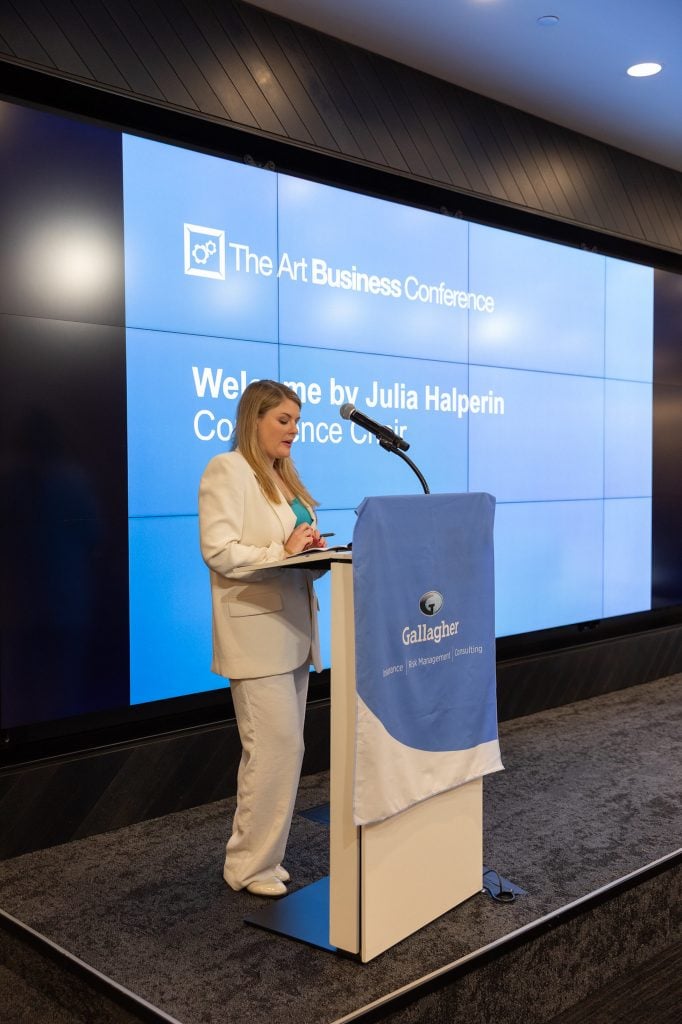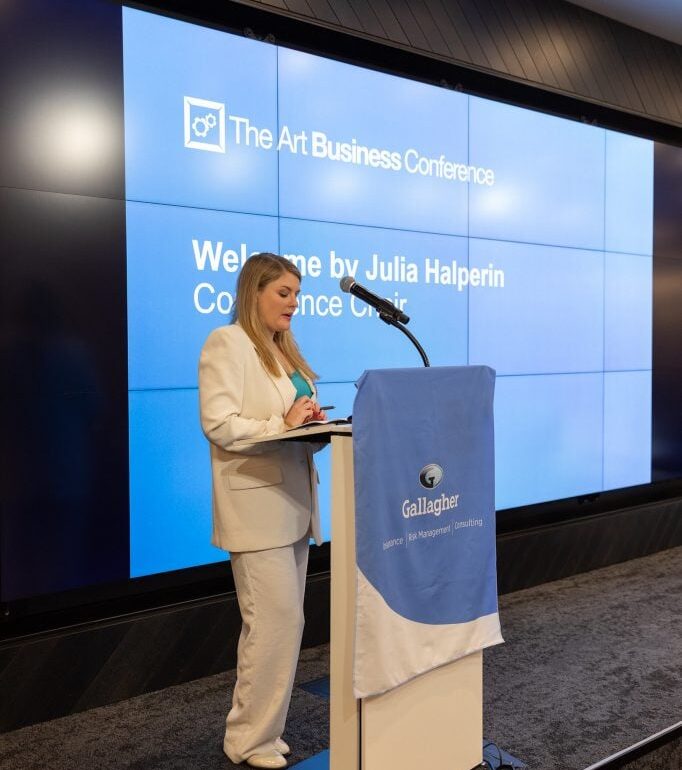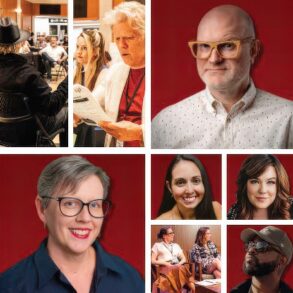Artnet was the official media partner of the Art Business Conference, New York.
The sixth edition of the Art Business Conference took place in Midtown Manhattan on Thursday, drawing more than 200 gallery staffers, auction-house specialists, art lawyers, art shippers, art insurers, and the like. Founded by Louise Hamlin, the event provided a fascinating look at the state of the art world, covering recent developments in the market, the law, and of course, tariffs. Julia Halperin, a former Artnet executive editor, served as the chair for the program, which included lively panels and presentations from leading professionals.
Here are three key takeaways from the action.

The Art Business Conference’s chair, Julia Halperin, at the 2025 New York edition on May 22. Photo by David Owens. Image courtesy Art Business Conference.
1. The Art Market Is Recalibrating
During the bellwether New York auctions earlier this month, it was clear that the once-soaring art market has come back to earth, amid higher interest rates and extreme economic uncertainty. The good news? There is still plenty of life in the market. In her keynote speech, Christie’s CEO Bonnie Brennan said of the recent auctions, “We had some headwinds, but we also had some really great stories” that may have been overlooked by some, like bidding wars for female Surrealists and sculpture by Simone Leigh.
Brennan noted that Christie’s $700 million haul was higher than what it made last May and November. “Yes the top of the market was thin,” she said. “Yes we have to be very strategic and thoughtful about making sure that all of those lots in the $20 million-plus [range] were covered, but we had great activity.”
Advisors Megan Fox Kelly and Alex Glauber also addressed the more subdued market in a panel, with Fox Kelly terming the May sales “more measured. This isn’t a market in crisis by any means. It’s a market that maybe is recalibrating and prices are being tested.” Glauber said that he is seeing “a lot more selectivity” from his clients. The recent art fairs in New York “certainly created an energy and a sense of urgency,” he said, but their timing right before the auctions probably hurt them, with some potentials buyers taking a “wait and see” approach.
2. Tariffs Are Sowing Terror
A panel moderated by attorney Wendy Lindstrom, a partner at Mazzola Lindstrom, highlighted just how much the market hates uncertainty.
Even though most artworks are exempt from Trump’s tariffs, there are all sorts of gray areas, for artists, concerning raw materials and fabrication costs, and galleries are having to devote resources to navigating customs compliance. “Even if the artwork remains exempt, the ecosystem” is impacted, said Kinsey Robb, the Art Dealers Association of America’s executive director. (Artnet has a three-part series on Trump’s first 100 days in office, looking at how funding cuts and tariffs are impacting the art world.)
Fellow Mazzola Lindstrom attorney and panelist Jessica Chen discussed the intricacies of international deals right now, like the fact that artworks are taxed based on their country of origin. So, if a French artist creates an artwork in China, it will be taxed by the United States as Chinese art (since its art is still subject to tariffs). But that same artist working in France would not have their work taxed by the U.S.
Phillips auction house attorney Hartley Waltman delved into how various auction categories are effected by tariffs. While original works of art are exempt as “informational materials” (unless they are of Chinese origin), furniture, design, objects, antiques, and antiquities are not exempt. Therefore, a Giacometti sculpture and a Giacometti table will receive different treatment, Waltman said.
Robb said that dealers are thinking carefully about which international fairs to participate in. She summed up the general consensus in the trade right now: “I can plan for bad. I can plan for good,” said Robb. “Not when I don’t know what the plan is. “
3. The Future Is Uncertain. Prepare Carefully.
No one has a crystal ball, of course, but many experts highlighted how the industry is changing, and offered thoughtful predictions about what is to come.
In a panel about generational wealth transfer that was moderated by former Artnet columnist Tim Schneider, Melissa Osterwind (the president of SRI Fine Art Services, a logistics firm) and Francesca Lisk (Sotheby’s chief talent officer) noted that auction houses have been embracing new sales categories, like NFTs, dinosaurs, and sneakers. (My colleague Katya Kazakina discussed this in a recent Artnet Intelligence Report.)
“We are witnessing a historic shift: The largest transfer of generational wealth is happening right now and we will see some incredible art change hands in the next 5 to 10 years,” Lisk said, adding that Sotheby’s is “adapting to a shifting global marketplace by expanding and strengthening relationships in emerging regions, including Asia and the Middle East.”
Katya moderated a panel on how galleries can continue after the deaths of their founders. Kasmin’s president, Nick Olney, discussed how, before his death in 2020, Paul Kasmin prepared his staffers to keep the business going. Olney emphasized the importance of starting succession conversations early, creating a collaborative gallery culture, and elevating current staff during the transition process.
Cat Manson, a former head of Christie’s global communications, argued that it was important for galleries to move from being identified with a founder-owner to being seen as a brand. To that end, Paul Kasmin Gallery was renamed Kasmin.
Katherine Degn, who owns the 140-year-old Kraushaar Galleries, termed a gallery’s long, enduring history “a burden and a privilege.”
Attorney Aimee Scala, a Los Angeles-based partner at Mazzola Lindstrom, gave a fascinating talk about AI, counseling everyone not to use the free version of AI tools like ChatGPT and Open AI. Why? Their licensing terms generally offer little privacy protection and allow companies to retain inputed text and images.
Don’t give away your ideas or writing ideas for free: That is good advice for every industry, in every situation.
This post was originally published on this site be sure to check out more of their content








